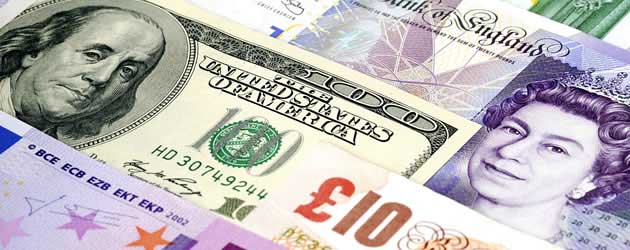 The Pound to US Dollar exchange rate (GBP/USD) climbed from 1.5300 to 1.5320 earlier this morning as traders reacted to a report from the Royal Institution of Chartered Surveyors (RICS) showing that house prices rose by 1% during April. The document was particularly encouraging for the British housing market because it showed that 25% of surveyors reported an increase of new buyer enquiries during the month – the fastest expansion since the middle of 2010.
The Pound to US Dollar exchange rate (GBP/USD) climbed from 1.5300 to 1.5320 earlier this morning as traders reacted to a report from the Royal Institution of Chartered Surveyors (RICS) showing that house prices rose by 1% during April. The document was particularly encouraging for the British housing market because it showed that 25% of surveyors reported an increase of new buyer enquiries during the month – the fastest expansion since the middle of 2010.
The government’s new ‘Help to Buy’ scheme, which allows buyers to purchase newly built homes with a minimal 5% deposit, was cited as a possible reason for the pickup in demand.
Sterling fared badly against the US Dollar yesterday as the ‘Greenback’, aided by stronger-than-expected US Retail Sales, continued to pummel the Pound as conjecture proliferated regarding a slowdown to the Fed’s easing scheme. GBP/USD sunk by around -0.7 cents during the day yesterday, touching a 3-week low of 1.5278, as US Retail Sales expanded by 0.1% in April.
The Pound was also let down by further speculation regarding the UK’s position inside the European Union. British Prime Minister David Cameron pledged to issue a draft report this week that will ensure an in-out referendum is held before the end of 2017. With UKIP, who are strongly opposed to Britain’s EU membership, gaining support across the country it is relatively plausible to suggest that by signing up for an EU referendum, David Cameron could potentially be pressing the ejector seat button that sends Britain shooting through the roof and out of the EU. Investors do not take kindly to uncertainty of this magnitude, and for this reason Sterling was punished on the currency market yesterday.
In Europe the Eurogroup of Finance Ministers announced that Cyprus had received its first tranche of financial aid, and indicated that Greece was on the brink of receiving its latest installment, which boosted demand for the single currency. The Pound to Euro exchange rate weakened by around -0.65 cents and struck a 3-week low of 1.1760 overnight, as the prospect of stability in the region improved.
The New Zealand Dollar suffered from a softer-than-forecast Retail Sales print of 0.5%, when 0.8% was expected, but the ‘Kiwi’ Dollar quickly recovered its half-cent losses against the Pound in the immediate aftermath of the result. The Australian Dollar struck a 5-month high of 1.5430 as stuttering Chinese Industrial Production and Retail Sales figures betrayed investor confidence in the high-risk ‘Aussie’.
Later on today the German headline Consumer Price Index inflation print is predicted to come in at 1.2%, which would give the European Central Bank more room to loosen monetary policy, but the Euro’s losses could be offset by the German Economic Sentiment ZEW survey, which is expected to show an improvement from 36.3 to 40.0 during May.
Over the next few days Eurozone growth figures, UK Unemployment numbers, and the Bank of England’s Quarterly Inflation Report are the most important indicators to look out for.

Comments are closed.